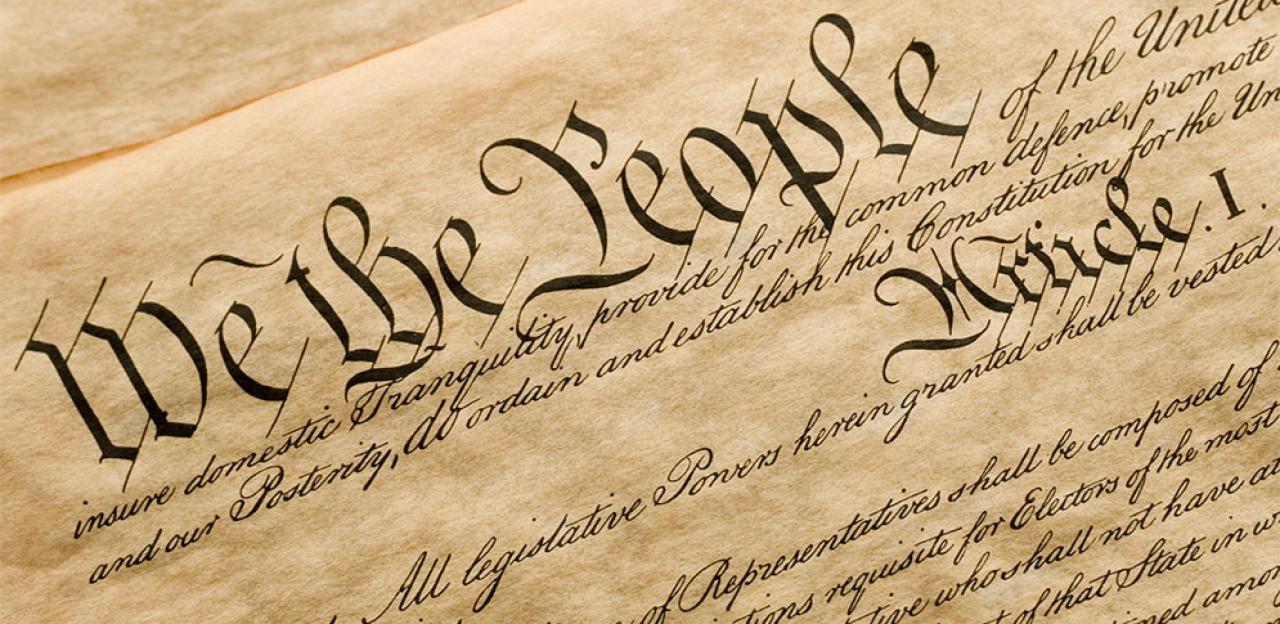The Constitutional Right to Abortions
The United States Constitution has 27 amendments that hold the fundamental rights that every American citizen has. The Fourteenth Amendment, which holds the Due Process Clause, holds the fundamental right that upheld the original ruling of Roe v. Wade in 1973.
Many Americans question what these phrases exactly mean amidst the overruling of Roe v. Wade in late June 2022. What is the Due Process Clause of the Fourteenth Amendment? How did it uphold the historic ruling of Roe v. Wade? Most importantly, how did it ultimately overturn Roe v. Wade?

The Constitution of the United States of America
The Due Process Clause
The Due Process Clause is stated in the Constitution as, “No State shall make or enforce any law which shall abridge the privileges or immunities of citizens of the United States; nor shall any State deprive any person of life, liberty, or property, without due process of law; nor deny to any person within its jurisdiction the equal protection of the laws.” In a shorter definition, it is the right to privacy.
Upholding Roe v. Wade
In the original ruling of the Supreme Court ruling, the justices declared that a woman’s right to an abortion falls within the boundaries of the right to privacy. The Supreme Court justices of 1973 declared that the right to an abortion was an implied right under the Fourteenth Amendment’s Due Process Clause. Weddington defined the right to liberty by “citing a series of prior cases indicating that the term ‘liberty’ must be interpreted broadly in a free society.”
Overturning Roe v. Wade
Roe v. Wade was overturned by the decision based on Dobbs v. Jackson Women’s Health Organization. In the leak prior to the announcement of the ruling, Justice Samuel Alito drafted that the right to privacy, more specifically, the right to abortions, is not explicitly stated in the Constitution. According to Justice Alito, when fundamental rights are “unenumerated” or “implied,” they are supposed to deeply rooted in the Nation’s history and tradition.” An example of this is the right to raise your child how you deem acceptable. Alito did not see that the history of abortions in the United State fell under this category, which ultimately led to the overruling of Roe v. Wade

Essentially, it all comes down to bias and interpretation. Supreme Court justices are supposed to base their decisions on the Constitution, but regardless, their biases (religion, sex, etc.) is going to reflect their interpretation of the Constitution. Therefore, the ruling and overturning of Roe v. Wade reflects current justices’ interpretation of the Constitution.
It is not a true Constitutional “right or wrong” answer to the question: Should abortions be illegal or legal in the United States of America?
What is Roe v. Wade?
Roe v. Wade is one of the most influential Supreme Court cases in United States history. From abortion access to birth control, it enlightened a new experience of healthcare for women. Throughout the semester, I will be discussing Roe v. Wade, what it meant for America, and how detrimental it was to reverse the ruling.
On January 22, 1973, the Supreme Court ruled that the Constitution protected Roe v. Wade, 410 U.S. 113, or the women’s right to have an abortion.
The plaintiff was Jane Roe, which was a pseudonym for Norma McCorvey. McCorvey was onto her third pregnancy at the age of 22, already divorced, had given up two children for adoption, and addicted to drugs and alcohol. She was not interested in becoming a plaintiff in a case, she just wanted to get an abortion. However, in Texas, where McCorvey lived at the time, abortion was illegal unless the mother’s life was endangered by carrying to full term. Regardless, lawyers Sarah Weddington and Linda Coffee were determined to ensure McCorvey’s right to bodily autonomy.
The defendant, Henry Wade, was an American attorney and served as the district attorney of Dallas County from 1951 to 1987. At the time, Wade was upholding Texas’ criminal statute that prohibited doctors to perform abortion.
Dallas Country District Attorney Henry Wade
The case was argued December 13, 1971, reargued on October 11, 1972, and the decision was made on January 22, 1973. In that time period, McCorvey gave birth to a girl who was given up for adoption. When the ruling came back, the courts favored the side of Roe, stating that the Due Process Clause of the Fourteenth Amendment to the United States Constitution provides a right to privacy, which ultimately protects a woman’s right to abortion. The vote for Roe was 7-2, with the supporting justices being Chief Justice Warren E. Burger, and six associate justices: William O. Douglas, William J. Brennan Jr., Potter Stewart, Thurgood Marshall, Harry Blackmun, and Lewis F. Powell Jr. The dissenting justices were Byron White and William Rehnquist.

Most recently, on June 28, 2022, there was a 5-4 vote to overturn Roe v. Wade, with the five justices being Samuel A. Alito, Clarence Thomas, Brett Kavanaugh, Neil M. Gorsuch, and Amy Coney Barrett. Fifty years later, the constitutional right to abortion has been taken away from all American women. So, what does this mean for American women? Why did Norma McCorvey become pro-life? Was Henry Wade really against abortions?
Find out more on Us and Roe.

